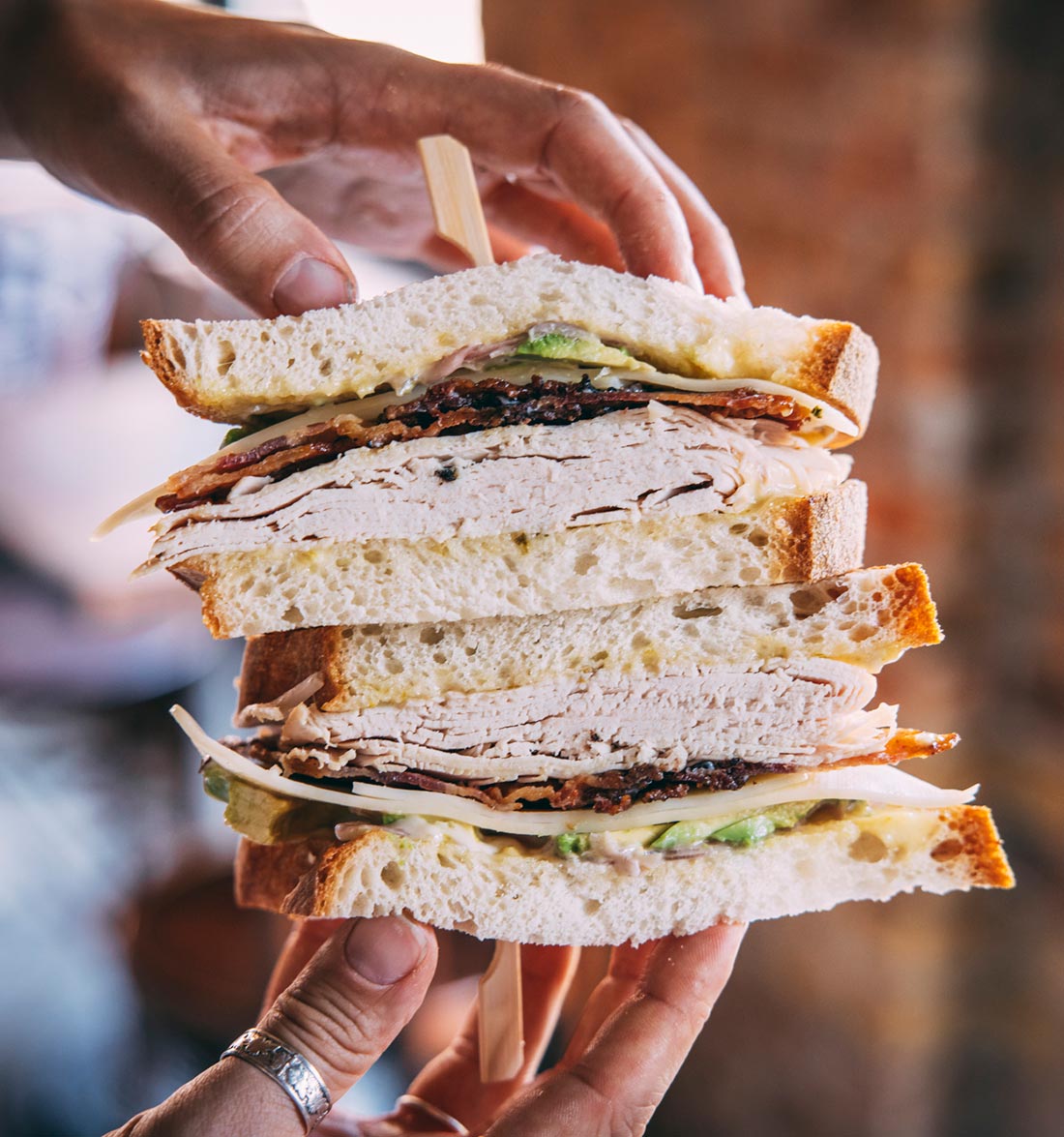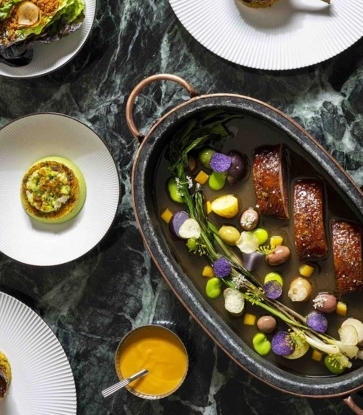
1. Blue Wine
What is it? Can’t decide between white, red or rosé? Why not be rebellious and order the blue. Blue? Yes, you read that correctly. Currently catching on like wildfire on social media, this all-new blue wine hails from Spain, contains 11.5 per cent alcohol, tastes sweet and fresh, and is meant to be consumed chilled. Blue wine is made by ‘not wine people’ in their 20’s, looking to shake up a traditional industry.
Why it’s hot right now: Because it’s previously been non-existent. Because people like blue. Because the team behind this wine is made up of creative folks who are having some fun, and are probably very good at marketing. Because many of the hip, Spanish youth do not enjoy drinking traditional wines anymore, and would rather drink beer, cocktails or something new and different.
The science: Blue wine is a non-aged wine made from a mix of five different varieties of red and white grapes. A pigment called anthocyanin, is extracted from the red grape skin and added to the wine to give it a distinct blue color. Another organic pigment, indigotine is also added to the wine, giving it a unique purple-indigo hue. All of the compounds have been approved by the European Food Safety Authority, say the wine's creators.
Where to get it? Get a friend from Spain to bring home a bottle for you. Gik, the company that makes blue wine has already sold 70,000 bottles in Spain and will be launching in the United Kingdom in the coming months. Here's hoping they pin Singapore on their distributors map soon.

2. Golden Milk
What is it? A beautiful and unusual combination of warm milk and turmeric featuring fresh or powdered turmeric, mixed into nut milk, whole milk, coconut milk or soymilk. Fresh turmeric root may be boiled with a little water or juiced to extract a golden liquid that is then added to milk, and the sunny-hued concoction may be sweetened with honey (preferably Manuka). Alternatively, more readily available golden yellow turmeric powder may be stirred into warm milk to make comforting and healing Golden Milk.
Why it’s hot right now: Because the global nutrition and culinary worlds have just recently woken up to the miraculous properties of turmeric, a powerful anti-inflammatory and antiseptic that promotes healing and immunity building. Early iterations of Golden Milk can be traced back to India, where generations of Indians have been drinking haldi-doodh, Hindi for ‘turmeric milk’, to stay healthy and strong.
The science: Turmeric contains an active ingredient known as curcumin, which according to medical research, has the ability to attack toxic cancer cells while leaving healthy cells unharmed. In addition to the treatment of cancer, turmeric and specifically curcumin have proven to be effective in the prevention and potential treatment of Alzheimer’s, arthritis, Crohn’s and ulcerative colitis. To increase the bio-availability, or absorption of curcumin by the body, the drink is best consume along with black pepper.
Where to get it? Golden Milk is currently making the marketing rounds as the uber trendy ‘Turmeric Latte’ but neither have gone mainstream in Singapore just yet, so you are better off making it at home. How? In a blender, add 1 cup of warm milk of choice, 1 teaspoon of Manuka or raw honey, ½ a tablespoon of ground turmeric, a pinch of ground cinnamon, a tiny pinch of ground black pepper, whizz for 20 seconds and enjoy.

3. Aquafaba
What is it? Believe it or not, aquafaba is the liquid found in a can of beans or the liquid remaining in the pot when you cook beans or legumes. It is essentially ‘bean liquid’ and has the consistency of raw egg whites (or you can cook it down until it does.) 'Aqua' is Latin for water and 'faba' is Latin for bean.
Why it’s hot right now: Before you gag at the thought of drinking aquafaba, don’t worry, it is not meant to be a drink. Aquafaba is a cooking liquid that is causing excitement in the culinary world and being used as a meat-free substitute for egg whites or as a thickener for sauces. It can even be whipped to make meringue! Little wonder that vegans are falling truly, madly, deeply in love with aquafaba.
The science: Beans are packed with protein and therefore bean liquid is rich in protein, starch and other soluble plant solids that have transferred to the water from the beans. Aquafaba has about 1 per cent protein whereas egg whites have about 10 per cent protein. Still, aquafaba can be used the same way as egg whites would be used in a recipe.
Where to get it? Open a can of chickpeas. Use the chickpeas for hummus or other recipe and voilà, the liquid that you would have ordinarily poured down the drain, is aquafaba! Other bean liquids are great too but chickpea is the favorite choice.

4. Aamras
What is it? While the word literally translates to ‘mango juice’ in Hindi, Aamras is more than that. A sweet, summer mango pulp drink originating from India, it is usually made with Alphonso mangoes, the very seasonal, very expensive and dearly beloved king of mangoes. The mango pulp is combined with milk, cardamom powder, saffron and a small amount (optional) of raw Indian sugar known as jaggery to create a thick, smoothie-like drink. Aamras is typically consumed along with the main course, and is eaten with a spoon out of a bowl, rather than drank from a glass.
Why it’s hot right now: Move over mango lassi, because Aamras is the purer, superior and more concentrated cooling summer drink. It's exclusivity - it is usually made from high-quality and hard to come by Alphonso mangoes that are available only from April to June every year - makes it all the more precious. Prices for the highly revered, sweeter-than-sweet Alphonso have been surging year on year, prompting shortages in export markets and even international patent feuds.
The science: Aamras is high in iron, vitamin C, vitamin B6, potassium, copper and vitamin A. It is also fat-free, cholesterol-free and sodium-free, and loaded with good-for-you complex carbohydrates - making them a healthier way to fulfill those sugar cravings.
Where to get it? Alphonso mangoes are grown in India and exported to most major markets. In Singapore, Alphonso mangoes can be found at shops in Little India (head for the smaller shops on Buffalo road or in Mustafa's food section) and they are often sold in a box of a dozen. It is advisable to make Alphonso Aamras at home, as the commercial tinned variety tend to have a ton of added sugar in them.





















